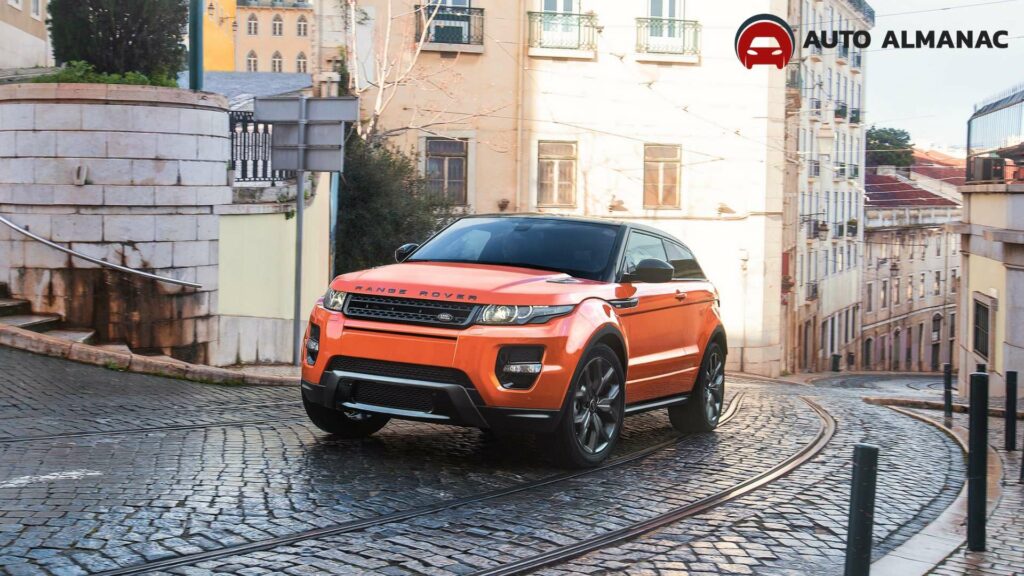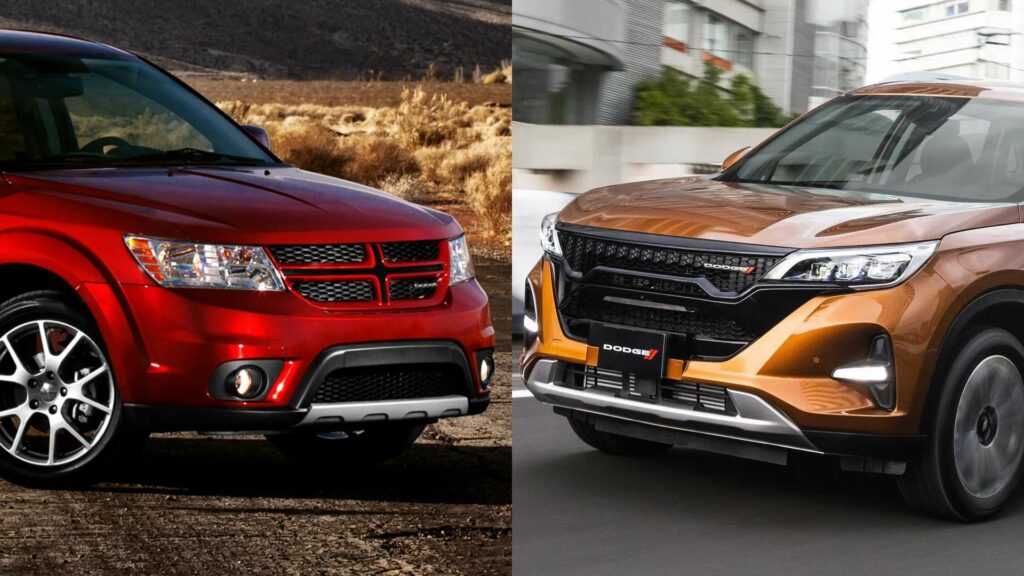
The last time we fancied roleplaying as a bunch of British celebrities (or royalties) around town, we got ourselves a Range Rover Evoque. Besides, even the late Queen Elizabeth herself owned Rovers!
By the time we were done gallivanting around, we realized that the Evoque is actually riddled with problems that are quite unfit for a king, a queen, or even a common folk with money to spare.
Social status aside, if you plan on getting an Evoque yourself, then you better be prepared to handle all of the common problems we’ll be listing for it below!
What are the most common problems of the Range Rover Evoque?
Common problems of the Range Rover Evoque concern its engine, steering, suspension system, brakes, airbags, seat belts, and various electronics.
Other Range Rover Evoque problems include fuel leaks, a faulty rear camera, failed windshield washers, and a loose headliner.
The summary above gives you a general list of the typical problems you can expect to have with a Range Rover Evoque.
However, the specific type of problem you can experience can also depend on the exact model year or generation of the SUV.
For instance, some problems may be more prevalent on earlier 1st-gen models of the Evoque, compared to newer 2nd-gen models that have already received updates to resolve such problems.
Hence, we’ll now be diving into the nitty gritty details of each Range Rover Evoque generation’s common problems and give you potential solutions to each of them below!
1st-Generation Range Rover Evoque Common Problems (L538) (2011 to 2019)
The most common problems of the 1st-gen (2011 to 2019) Range Rover Evoque are steering loss, premature flywheel wear, brake issues, rear camera issues, faulty airbags, fuel leaks, and an electrical system short circuit.
Steering Loss Due to Loose Knuckle Bolt
Suddenly losing steering control in any vehicle can be a frightening experience, and for the Range Rover Evoque, cases of steering loss have been traced to a loose bolt for one of the front suspension knuckles.
Luckily, Range Rover has already issued a recall for this issue, which states that the bolt may not have been torqued or tightened to the right specifications.
This may cause the suspension components to separate at the bolt’s joint, which makes it highly likely for an accident to occur.
Not only does the recall retorque the bolt to the right specs, but it also replaces the affected suspension components such as the front lower control arm and the knuckle fixing.
Flywheel Prematurely Wears Out
The manual Range Rover Evoque’s flywheel is known to prematurely wear out before its intended lifespan, though this has been specifically observed in models that are equipped with a stop-start system.
Once your Range Rover Evoque’s flywheel gets too worn out, you may start to feel some vibrations every time you use the clutch pedal.
Since the flywheel works hand-in-hand with the clutch during gear shifts, it’s also worth getting your clutch checked and possibly replaced if it has also been damaged as well.
Unfortunately, no recall has been issued for the Range Rover Evoque’s flywheel, so you will have to pay about $1,200 (about £950) out of pocket if you ever need to replace both the clutch and the flywheel.
Issues With Brake Components
The braking system is another problematic part of the Range Rover Evoque that can leave you wondering why the vehicle’s not getting any slower despite burying the brake pedal to the firewall.
Earlier Evoque models from 2012 and 2013 make up the bulk of reports concerning the SUV’s brakes, which suddenly just lose all braking power, regardless of the speed that owners are traveling.
As it turns out, 70 of these 2012 to 2013 Range Rover Evoque models have been recalled by the manufacturer for being equipped with insufficiently torqued rear brake calipers.
Another possible source of the Range Rover Evoque’s sudden brake loss is a faulty brake vacuum pump/motor, which was reported to mostly affect 2012 to 2013 models and to a lesser extent, 2014 models as well.
The main culprit to the brake vacuum pump failures was found to be a blocked or clogged orifice that restricts the flow of lubrication or oil to the pumps.
According to the NHTSA’s investigation, the blockage itself was caused by the buildup of oil sludge due to the vehicle not having its oil changed at the right intervals.
Despite the presence of 200 warranty claims and several upgrades to the investigation, the manufacturer has yet to issue a recall regarding the Range Rover Evoque’s brake vacuum pumps.
Rear Camera Issues
Moving on to the rear of the vehicle, the Range Rover Evoque’s rear (reversing) camera is known to have issues, leaving owners with limited to no live image from the camera while the vehicle is in reverse.
One of the most likely causes of this is that the tailgate is actually misaligned, which makes the rear camera partially or fully obstructed by the positioning of the tailgate.
If this is the case, then you need to have the tailgate either realigned or replaced completely with a new one.
In other cases, it could be that the camera itself is misaligned, which means that you’ll also have to remove the tailgate to readjust it at the right angle.
Malfunctioning Airbags
Certain Range Rover Evoque models from the 1st generation had problematic airbags that can potentially fail to deploy, spelling trouble for the vehicle’s occupants if ever a crash was to happen.
Because of obvious safety concerns that it has raised, the Range Rover Evoque’s airbags have received a recall specifically targeting the 2012, 2013, and 2017 model years of the SUV.
Among these three model years, the older ones from 2012 and 2013 had an issue with their passenger-side airbags getting disabled due to a software malfunction in the restraint control module.
This disabling of the airbags will, of course, significantly increase the risk of injury to front passengers in the event of a crash.
Land Rover was thankfully quick to respond to this issue by issuing a recall (14V395000) and having the affected models’ restraint control module software updated at no cost.
As for the newer 2017 Range Rover Evoque models, their passenger-side airbags can potentially fail to deploy for a different reason, and that is the airbags’ inflator initiator failing to activate during a crash.
Another recall (16V941000) was also issued for the 2017 Evoque models’ airbags, which replaced the front passenger airbag, including the defective inflator module, of the affected vehicles.
Engine Bay Fuel Leaks (Fuel Rail End Caps)
One problem of the Range Rover Evoque that can potentially be a fire hazard is the leaking of fuel into the engine bay.
More specifically, fuel leaks on the Range Rover Evoque can be commonly traced back to the fuel rail end caps.
2018 models of the Range Rover Evoque that are equipped with the 2-liter I4 gasoline/petrol engine have received a recall (18V087000) for their leaking fuel rail end caps.
The recall essentially replaces the entire fuel rail at no cost to the customer, so if you plan on buying a 2018 Range Rover Evoque with a 2-liter engine, then it also wouldn’t hurt to ask the seller if it has already undergone a recall for its fuel rail.
Short Circuit in Electrical System (DCDC Converter)
Another specific Range Rover Evoque problem that can also potentially start a fire is the short-circuiting of the electrical system.
Certain 2020 models of the Range Rover Evoque have been reported to have a 48-volt electrical system that can potentially overload.
In turn, this electrical overload can cause the metal oxide semiconductor field effect transistor (MOSFET for short) to fail, which can then cause the DCDC converter to short-circuit to ground.
In relation to this short circuit issue, you may experience symptoms such as the battery warning sign illuminating the dashboard and even the presence of smoke accompanied by a burning smell from the DCDC converter vent.
To remedy this issue, the manufacturer issued a recall (20V683000) that updates the software of the affected vehicles, which reduces the chances of electrical issues occurring.
2nd-Generation Range Rover Evoque Common Problems (L551) (2020 to Present)
The most common problems of the 2nd-gen (2020 to present) Range Rover Evoque are engine stalling, premature air suspension wear, seat belt issues, failed windshield washers, faulty tire pressure software, faulty eCall system, and a loose headliner.
Engine Stalling Problem
First on the list of problems that are worth being wary about on the 2nd-gen Range Rover Evoque is the abrupt stalling of the engine.
Cases of engine stalling have been mostly reported to occur in 2019 to 2020 Range Rover Evoque models, which can suddenly happen whether you’re at a dead stop or already on the move down the highway.
Unfortunately, there is still no recall for the Range Rover Evoque’s stalling problem, which basically had owners in a trial-and-error situation just to figure out the source of the problem.
While some only went as far as restarting the vehicle to fire up the engine again, others actually managed to have some luck by updating both the PCU (power control unit) software and the transmission software.
However, since a stalling engine can also be caused by other issues related to ignition or fuel, it’s also worth getting your ignition and fuel system components checked.
Air Suspension Wears Out Quickly
2nd-gen Range Rover Evoque models are equipped with modern air suspension systems, though these are known to wear out quite prematurely.
Whenever the Range Rover Evoque’s air suspension is already worn out, you can expect to have a bumpier ride quality, which can be caused by worn-out air suspension “bags”.
In addition, you can also potentially run into issues with the air suspension’s height sensor and compressor, control module, or airlines, all of which are known to become faulty or worn out over time.
Now, you can either have the entire air suspension system replaced with a new one, which is quite expensive (well over $1,000 in parts and labor), or opt for a cheaper but more traditional set of coil springs and shocks.
Seat Belt Issues
Seat belt issues are commonplace in the Range Rover Evoque, especially in the case of 2020 models that have received the wrong specifications for their seat belt retractors.
2020 Range Rover Evoque models with the wrong emergency locking retractors (ELR) can cause the seat belts to become loose, which is obviously a pretty big safety risk for the occupants.
Fortunately, Land Rover has already issued a recall (R/2021/170) that specifically replaces the entire front right seat belt assembly of affected models if they’ve been found to have defective retractors.
Windshield Washer Failure
A pretty prevalent issue with many Range Rover Evoque models is that the windshield washers suddenly stop working.
2020 Range Rover Evoque models are yet again the most problematic bunch when it comes to faulty windshield washers, to the point that around 2,200 units of them have been recalled for such.
In affected models, both the front and rear windshield washers can malfunction due to the fuse that controls them failing. This can significantly reduce the visibility of the driver in situations where the windows need to be cleaned.
The recall states that the faulty fuse for the windshield washers will be replaced along with the engine junction box lid free of charge. Furthermore, the info for the fuse rating in the owner’s manual will also be updated.
Faulty Tire Pressure Monitoring Software (TPMS)
Another electronic feature that is known to become faulty on some Range Rover Evoque models is the tire pressure monitoring software (TPMS).
Under normal circumstances, if the cold inflation pressure drops below the recommended pressure (25%), the tire pressure software/system should trigger a warning light on the instrument cluster.
However, the tire pressure software/system of convertible versions of the 2020 Range Rover Evoque (with 18-inch wheels) can fail to inform you if the cold inflation pressure has already dropped below 25%.
In this case, since you’re practically unaware of it, the tire treads can potentially wear out faster and separate from the rest of the tire, which puts you at risk of losing control of the vehicle.
A recall by Land Rover fixes this issue by installing the latest software update for the TPMS so that it can properly indicate the current inflation pressure.
Faulty Emergency Call (eCall) System
The 2nd-gen Range Rover Evoque (and some 1st-gen models) comes with an emergency call (eCall) system that may not work properly.
The manufacturer has actually issued a recall (R/2020/043) regarding the 2018 to 2020 Evoque’s eCall system, which states that its in-vehicle phone number has not been configured correctly by the Telematics Service Delivery Platform.
As a result, the vehicle’s eCall system does not meet the regulated requirements for it and will be rendered unusable or ineffective during emergency situations.
Thus, the recall aims to remedy this by updating the Telematics Service Delivery Platform of affected models so the in-vehicle number is actually usable.
SRS Warning Gets Falsely Triggered
One more problem with the Range Rover Evoque’s electronics is that the SRS (Supplemental Restraint System) can get falsely triggered and turn on a warning light.
The SRS warning light is primarily used to indicate if there is a problem with the vehicle’s airbags, though when the system malfunctions, it can suddenly light up even with no problem present.
As you can imagine, this issue can fail to accurately warn the driver if there’s an actual fault with the airbags, resulting in a possible safety hazard in the event of an accident.
According to Land Rover’s recall on the matter, around 19,000 Evoque units from the 2020 model year can exhibit a faulty SRS warning light, and the software for the SRS needs to be updated to fix the issue.
While the software update is completely free, you cannot download it yourself from the vehicle’s system. Thus, you still need to bring your Range Rover Evoque to the nearest dealership to have it installed by mechanics.
Headliner Can Come Off Due to Improper Adhesion
The 2020 Range Rover Evoque has a known issue with its headliner coming loose and potentially injuring occupants.
The Range Rover Evoque’s headliner contains a metal plate that is attached via an adhesive bond, and the manufacturer’s recall states that the bond can lose its adhesion when exposed to colder temperatures.
Thanks to the recall, about 3,444 affected 2020 Evoque models can have self-adhesive fleece tape applied to both their headliners and metal plates at no cost to the owners.
2011 to 2019 Range Rover Evoque Recalls
| Recall Number | Recall Date | Recall Reason |
| R/2019/046 | Aug. 29, 2019 | Vehicles did not pass the required CO2 emissions levels. |
| R/2019/049 | Apr. 10, 2019 | Vehicles did not pass the required CO2 emissions levels. |
| R/2019/107 | Mar. 26, 2019 | Fuel levels may be inaccurately displayed or indicated. |
| R/2018/036 | Mar. 13, 2018 | Fuel may leak from the fuel rail ends and into the engine bay. |
| R/2017/153 | May 23, 2017 | The fuel delivery module’s locking ring may have been assembled incorrectly. |
R/2016/289 | Jan. 31, 2017 | Engine wiring harness of automatic models may have been routed incorrectly, which can cause a short circuit. |
R/2016/307 | Dec. 31, 2016 | Front passenger airbags may fail to deploy due to the airbag initiator’s generant mix ratio not meeting the required specification. |
R/2016/302 | Dec. 31, 2016 | The engine may malfunction or even cut out due to the engine harness rubbing against an engine bracket. |
| R/2016/290 | Dec. 31, 2016 | Potential loss of steering control due to incorrectly tightened clamp bolt of the front lower control arm and knuckle fixing. |
| R/2016/131 | Aug. 3, 2016 | A fuel leak may occur due to the fuel hoses rubbing against the plastic material underneath the engine cover. |
| R/2015/235 | Dec. 8, 2015 | The engine may malfunction or even cut out due to the engine harness being improperly routed and chafing. |
2020 to 2023/Present Range Rover Evoque Recalls
| Recall Number | Recall Date | Recall Reason |
| R/2021/232 | Jul. 8, 2021 | Vehicles may have received a remanufactured steering rack with incorrectly installed track rod ends during the last repair procedure. |
| R/2021/231 | Jun. 25, 2021 | Affected vehicle models may have been fitted with an incorrectly manufactured rubberized fuel return hose assembly. |
| R/2021/170 | May 18, 2021 | The emergency locking retractor (ELR) of the front-right seat belt assembly may fail to work properly. |
| R/2020/381 | Feb. 10, 2021 | The front seat material does not meet the required burn rate specifications. |
| R2020/380 | Feb. 3, 2021 | The 2nd-row seat belt assemblies may have a retractor part with the incorrect specifications for the intended market. |
R2020/322 | Nov. 13, 2020 | An electrical overload in the 48-volt electrical system may cause the metal oxide semiconductor field effect transistor (MOSFET) to fail. |
R2020/043 | Feb. 28, 2020 | The emergency call (eCall) system’s phone number has been incorrectly configured, making it not conform to regulated requirements. |




